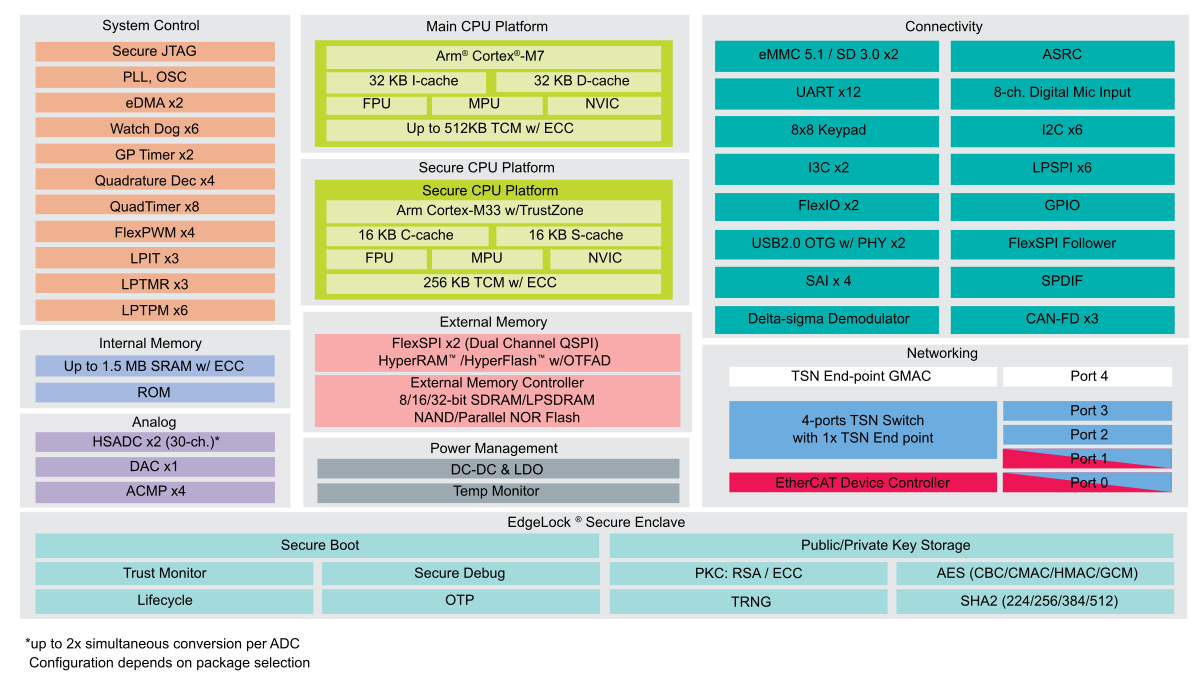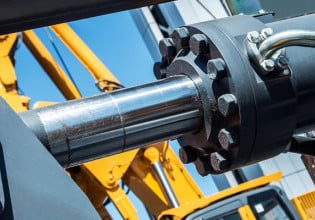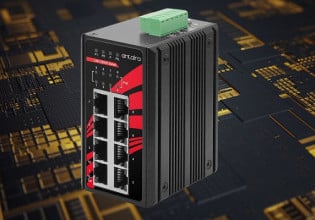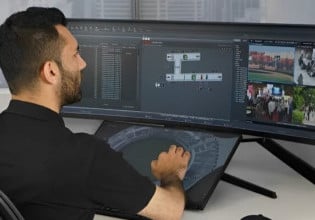How Future-Proof Industrial Motor Control Solutions Help Shape Industrial IoT
Controlling motors efficiently requires more than silicon. Accompanying development tools, standard algorithms, and hardware evaluation kits can speed up the development process, thus reducing costs and time to market.
Modern industrial manufacturing processes rely on accurate, reliable, efficient, and secure motor and motion control solutions. Various motors are vital for many processes on a factory floor, and they are a crucial component of larger machines. However, motors and the accompanying controllers are also necessary for many other applications ranging from building automation to medical equipment. Regardless of the application, motor controllers must be efficient, cost-effective, and accurate.
In industrial settings, controllers must typically operate in real-time and maintain functional safety in even the harshest conditions for many years. However, as this article discusses, controlling motors efficiently and accurately requires more than silicon. Accompanying development tools, standard algorithms, and hardware evaluation kits can significantly speed up the development process, thus reducing costs and time to market.

Figure 1. Industrial robots rely on motor control solutions that are precise, efficient, secure, and reliable. Image use courtesy of Canva
Industrial Robotics - One of Many Use-Cases That Relies on Motor Controllers
Industrial robots were not made to replace human workers entirely. Some tasks may be fully automatable and performed faster and more accurately by machines. However, the primary purpose of industrial robots is to perform repetitive, dangerous, and labor-intensive tasks, thereby augmenting human talent. As a result, workers can focus on complex, more creative duties that bring value to a company, boosting their work satisfaction and productivity and simultaneously reducing costly mistakes and accidents when workers get distracted by mundane, repetitive work.
In addition, industrial robots can help a company lessen the impact of worker shortages or health-related shutdowns. Fewer workers on a factory floor result in a reduced chance of infection for the individual worker. Workers, for instance, can monitor and control semi-automated tasks from a safe distance, such as in separate office spaces. As industrial systems are typically operating constantly, AI and cloud-augmented data analytics are two examples of additional methods that can further help optimize a factory’s output and efficiency.
Understanding the Difference Between Motor and Motion Control
Sometimes, the terms motor control and motion control are mistakenly used interchangeably. However, motor control is a technique to regulate and govern the spinning of a single motor. A typical motor controller adjusts and controls parameters such as the torque, speed, or position of a single motor. In contrast, motion control is more than just controlling a single motor. A motion control system synchronizes and orchestrates multiple motors to complete a more sophisticated, coordinated sequence of movements. For example, a multi-axis robotic arm, as it is often used in manufacturing, requires a motion control system that coordinates the motors of the robot so that it can perform more elaborate movements. Such a system is also responsible for trajectory planning, speed planning, interpolation algorithm, and kinematics conversion.
In summary, a motion controller calculates motion information to recreate complex movements. It then communicates this data with multiple motor controllers that make one of the robot’s motors spin. The motors then execute the direction of the robotic arm, and position sensors supply the motion controller with speed and position information.
Accelerating Design Cycles for Industrial Automation Applications
Designing, implementing, and testing such advanced motor and motion control systems is not a trivial task. Motor controllers need to interface with a variety of sensors, and they need to process analog and digital signals accurately. Driving a motor also requires precise, consistent waveforms to prevent the motor from stuttering or turning at the wrong speed. On the other hand, motion controllers need to communicate with various industrial equipment. Therefore, these devices need to support an extensive range of standard industrial communication protocols such as Ethernet (EtherCAT, TSN, etc.), CAN, and RS-485. In addition, communication, processing inputs, and generating motor control data must often happen in real time while maintaining functional safety, data integrity, and security.
Advanced on-chip security features can help engineers reach state-of-the-art security in their projects while simultaneously reducing the number of external components in a design. As a result, these measures can dramatically accelerate the design process and further reduce development costs, testing efforts, and time to market.
Finally, motor and motion control require more than just hardware. A reliable supplier that guarantees long-term support for their embedded processors is as essential as extensive documentation, software development kits, and enablement tools when designing industrial hardware.

Figure 2. Block diagram of the i.MX RT1180 Crossover MCU. Full size image here
Hardware Solutions for Controlling Motors
One device that can fulfill all these requirements is NXP’s i.MX RT1180 crossover MCU. This device contains two CPUs, one ARM® Cortex®-M7-based CPU clocked at 800 MHz and a second, secure ARM® Cortex®-M33-based CPU platform clocked at 240 MHz with ARM’s TrustZone extension. Moreover, the i.MX RT1180 is the first microcontroller with an integrated IEC 60802 compliant Gbps time-sensitive networking (TSN) switch supporting multiple protocols, allowing the device to act as a bridge between existing communication systems and future-proof Industry 4.0 infrastructure. Supported protocols include Profinet, Ethernet/IP, EtherCAT, CC-Link IE Field, OPC UA, Profinet over TSN, and more.
In addition, the i.MX RT1180 is NXP’s first crossover MCU with an integrated EdgeLock Secure Enclave, a pre-configured, self-managed, integrated security subsystem providing a component-level foundation for IEC 62443 system compliance.
Alternatively, engineers should look into the LPC553x/LPC55S3x family of advanced analog ARM® Cortex®-M33-based microcontrollers. The LPC55S3x core platform can run up to 150 MHz, including ARM’s TrustZone hardware security solution and a memory protection unit (MPU). A dedicated PRINCE module allows real-time encrypting and decrypting of data written to and read from the chip’s flash memory. Secure GPIO, secure boot, and error-correcting code (ECC) support for the entire on-chip RAM further help strengthen applications built on top of the LPC55S3x family of MCUs.
Motor Control Hardware Specifications
The analog and digital signal processing capabilities make these CPUs especially interesting in motor control applications.
Firstly, the built-in proprietary PowerQuad DSP accelerator offers 10x clock cycle reduction, significantly improving signal processing efficiency. The MCU includes four single-ended 16-bit or two-differential input (configurable) ADCs with a sample rate of 2.0 Msamples/sec (16-bit mode) or 3.13 Msamples/sec (12-bit mode). Two integrated temperature sensors are directly connected to the chip’s ADCs. Besides other features, the LPC55S3x offers three 12-bit DACs with sample rates of up to 1.0 MSample/s. Finally, two FlexPWM elements with four submodules provide 6 pairs of high-precision complementary PWM outputs and two quadrature Encoder/Decoders (QEI).

Figure 3. An MCU card, a motor driver card, and a motor make up the FRDM platform.
Hardware Development Platforms Allow for Faster Prototyping
Rapid prototyping helps engineers eliminate tedious design tasks, which improves time-to-market and the cost of a product. For that purpose, NXP offers a few motor control hardware development platforms that include all the features needed to test controllers and quickly build functional prototypes.
The low voltage development platform (also referenced as the FRDM platform) offers engineers a low-cost prototyping environment when testing NXP MCUs for controlling brushless DC (BLDC) and permanent magnet synchronous motors (PMSM). This kit consists of three components: An MCU card, for example, the FRDM-KV11Z, a motor driver card, such as the FRDM-MC-LVBLDC, and a motor. The entire kit is compatible with the standard Arduino Rev3 pin layout.
The high voltage development platform (HVP platform) is capable of driving BLCD, PMSM, and AC Induction motors (ACIM). As the name suggests, its intended purpose is to accelerate the development of prototypes for high-voltage motor-driver applications. It consists of a base unit (HVP-MC3PH) that takes an input voltage between 95 and 220 Volts AC or 110 to 390 VDC and delivers an output of 5 A at 1 KW without PFC (800 W with PFC). This device also contains an integrated power stage and power factor correction (PFC). A microcontroller card complements the base unit, and engineers can choose from various models that allow them to test a specific NXP MCU.
The i.MX RT Industrial Drive Development Platform is a development kit that offers more than just industrial motor control capabilities. The kit leverages the robust and industrial-qualified i.MX RT1170 crossover MCU to demonstrate how the powerful microcontroller can simultaneously control up to four permanent-magnet synchronous motors. Further, the MCU boasts a clock speed of 800 MHz, which leaves it with plenty of headroom for other tasks, such as TSN support, running a graphical HMI interface, data logging, and fault detection. Finally, the development kit's digital board includes an EdgeLock SE05x secure element that, combined with the i.MX RT1170, aims to help engineers develop industrial equipment that reaches IEC 62443-4 compliance.
These hardware development kits lower the development cost of a prototype and help engineers reduce the time-to-market of motor control solutions. A recent NXP guide discusses the available prototyping platforms, compatible daughter cards, and their intended use cases.
Motor Control Requires More Than Just Hardware
Finally, engineers should remember that motor and motion control applications require more than just controlling hardware and development kits. In addition to reliable, precise, and efficient controllers, these applications call for standard software and enabling tools that help engineers meet their design goals and deadlines.
NXP offers a software suite and range of enablement tools for that purpose. The MCUXpresso IDE and SDKs offer embedded developers what they need to get started. Also, the NXP embedded software libraries supply engineers with thousands of algorithms that they can easily integrate into complex real-time control applications and motor control reference designs.

Figure 4. Debugging tools, like the NXP’s FreeMASTER, enable runtime configuration and embedded software application tuning.
FreeMASTER, a real-time debugging data visualization tool, is another powerful yet user-friendly software tool that enables runtime configuration and tuning of embedded software applications. FreeMASTER also allows software developers to use custom HTML/JavaScript dashboards to display and exchange data with external applications. Several plug-in components, for example, the Motor Control Application Tuning (MCAT) tool, can augment the features in the standard version of FreeMASTER. This plug-in allows engineers to perform real-time tuning of various motor control parameters without detailed knowledge of PI controller constant calculations.
Summary
Many applications require precise, efficient, secure, and reliable motor control solutions, for example, industrial robots that augment human talent on a modern factory floor. In addition to the standard requirements, industrial motor and motion control systems must also function in real-time, often requiring them to support multiple industrial communication standards such as TSN and EtherCAT.
Motor control alone is often not enough in more advanced applications. Often, these use cases call for motion control systems that coordinate multiple motors and can execute tasks such as trajectory planning, speed planning, interpolation algorithm, and kinematics conversion.
Motor control systems interface an extensive range of sensors and must accurately process analog and digital signals. In addition, these systems must produce exact, consistent waveforms to prevent the motor from stuttering or turning at the wrong speed. Motion controllers communicate with various industrial equipment and need to support an extensive range of standard industrial communication protocols such as Ethernet (EtherCAT, TSN), CAN, and RS485. In addition, communication, processing inputs, and generating motor control data must often happen in real-time while maintaining functional safety, data integrity, and security.
Advanced on-chip security and communication features can drastically speed up design cycles and accelerate a product's time to market. For this purpose, NXP offers a range of suitable embedded solutions, two of which were discussed in this article. In addition, NXP offers a few hardware development kits for rapid prototyping. However, hardware is not everything regarding motor and motion control applications. In addition to silicon, developers need reliable suppliers, extensive software libraries and documentation, and enablement and fine-tuning tools that help them get the most out of their motor controllers without spending numerous hours debugging and fine-tuning parameters manually.






